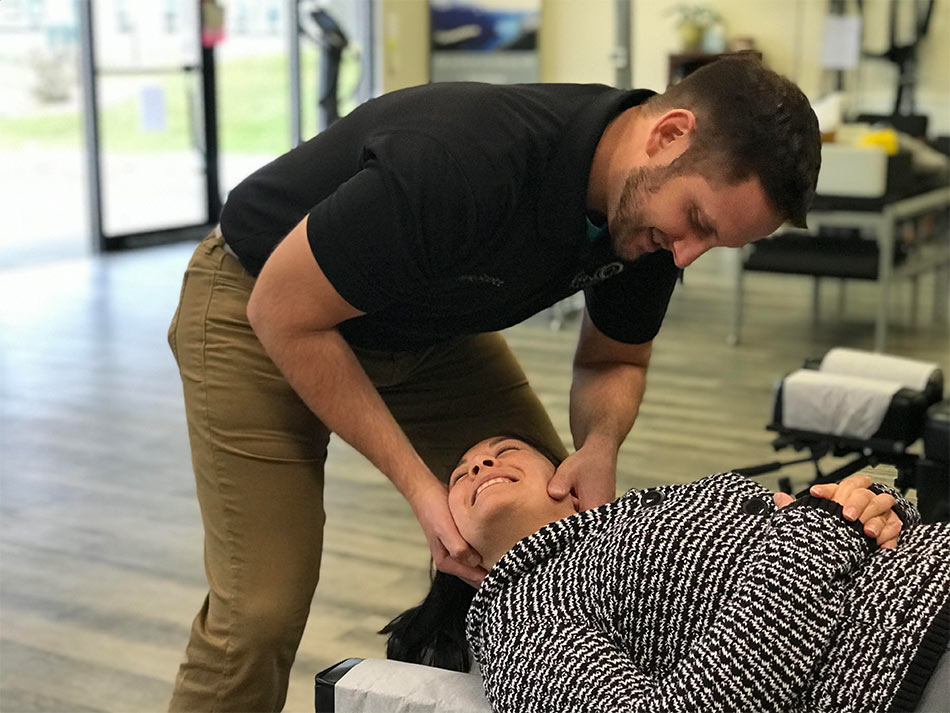What Are The Symptoms Of Lumbar Radiculopathy?
The term ‘lumbar radiculopathy’ refers to a set of symptoms resulting from compression, inflammation or injury to one or more of the nerve roots that arise in the lower lumbar spine and sacral area. It is also commonly referred to as sciatica since it often affects the sciatic nerves (which travel down each leg). New York Pain Care are specialists in treating sciatica pain, and can provide you with an appropriate diagnosis and treatment plan if you experience any of these symptoms.
What Is Lumbar Radiculopathy?
Lumbar radiculopathy results from compression, inflammation or injury to one or more of the nerve roots in the lower lumbar spine and sacral area. This can cause inflammation, pain and other neurological changes along the length of the nerve, which may be felt anywhere along its path in various ways depending on where it becomes affected. In some cases, weakness or numbness may only be present on one side of the body.

Symptoms Of Lumbar Radiculopathy
There are a range of symptoms associated with lumbar radiculopathy which vary depending on which nerve root is affected. These include:
1) Lower Back Pain:
One of the most common indicators for this condition is pain in your lower back which can either be sharp or dull depending on how severe it is. It tends to worsen when sitting down for long periods, bending over or lifting heavy objects, and during certain activities such as coughing or sneezing.
2) Nerve Root Impairment:
This involves having sensations such as pins and needles, burning or tingling radiating down one leg due to nerve irritation caused by increased pressure around it. The sensations may also spread further down into your foot and toes as well.
3) Weakness/Loss Of Motion:
You might notice that strength has become impaired in certain areas of your legs or feet due to reduced control over them due to damaged nerves; this could result in difficulty with walking up stairs, standing up straight without feeling wobbly etcetera.
4) Muscle Spasm/Cramping:
Muscle spasms usually happen when a muscle contracts involuntarily; this could make it harder for you move properly due to tightness around joints that isn’t relieved until they’re stretched out again slowly but surely over time with gentle stretches done consistently every day or two days at least!
How is lumbar radiculopathy diagnosed and treated?
In order to accurately diagnose lumbar radiculopathy, an initial medical assessment should be carried out by a qualified healthcare professional who will then refer you to an expert such as New York Pain Care if necessary for further investigation if they suspect something serious is going on inside your spine such as a herniated disc etc – here specialist doctors will use imaging techniques such as MRI scans so they can see exactly what’s going on inside before prescribing any medication/treatment plan accordingly! Treatment plans usually include physiotherapy sessions combined with medication management techniques, including anti-inflammatories such as NSAIDs, plus lifestyle changes (e.g. reducing smoking etc). Longer term interventions such as epidural steroid injections may also sometimes be recommended by experts depending on individual circumstances, although these should always be considered only after careful consideration as they also carry some risks (such as infection).

Conclusion
At New York Pain Care, we understand that living with chronic back pain can have a significant impact on quality of life – so whether it’s directly related to lumbar radiculopathy itself – or just suspected based on clinical presentation alone – we strive hard every day to work closely with all our patients to ensure the best possible outcome, no matter what their situation! If you think you may be experiencing any of the above symptoms then please don’t hesitate to get in touch today to arrange an appointment to discuss matters in more detail if required.



